Top 10 Differences Between Caricatures and Cartoons
For many people, these two concepts are the same. At first glance, it's easy to understand why society confuses them: both convey humor, parody, or critique, but in separate manners. Both can be hand-drawn and can share some striking similarities. But they're not the same thing. A thin thread, practically invisible for some, makes the difference. In this blog article, we'll explain the contrasts between these two art forms in a way that is clear and easy to understand.
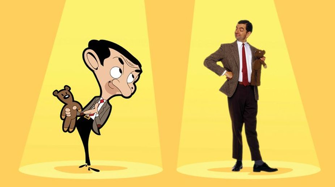
What's the Definition of a Cartoon?
Let's start our journey by defining the term 'cartoon.' This beautiful art form is well-known to everyone, even from an early age, through scenarios that captivated us and kept us glued to the television for hours. A cartoon is a type of drawing, usually in a nonrealistic or semirealistic style, that shows characters and tells a story or a funny joke in the form of one picture or a series of animations. They can be used in comic strips, animated series, political jokes, and educational material. They're flexible and can reach many people with easy-to-understand visuals and storytelling. Their best aspect is that they describe good vs. evil or have morals at the end of the stories to teach children specific values.


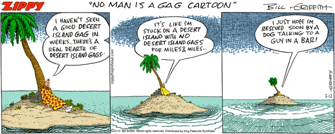
You've probably seen them in magazines: those panel comics or gag cartoons featuring a single illustration that often turns a specific scenario into something humorous. The funny story is typically revealed in a speech bubble or at the cartoon's lower edge. On the other hand, editorial cartoons, which are staples in journalistic media, express a more sober tone within irony and satire.
Comic strips differ in that they are made of a series of images and speech bubbles, unfolding a brief narrative or joke.
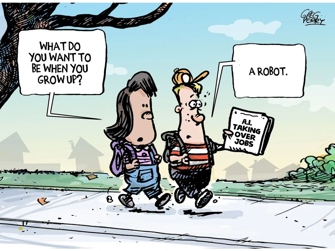

What's the Definition of a Caricature?
A caricature exaggerates distinctive features or quirks to make the subject look funny or weird. There are two ways to do this: exaggeration or oversimplification. These two techniques often magnify specific parts while diminishing the rest. For instance, the head might be more significant and prominent, while the body would remain plain. The artist can poke fun at celebrities or other public figures through caricatures and creativity, focusing on their standout physical features or traits to get a laugh or make a point. A skilled painter will know how to scan the subject and highlight what makes a person different, often giving us a funny or clever take on their personality, actions, or looks.
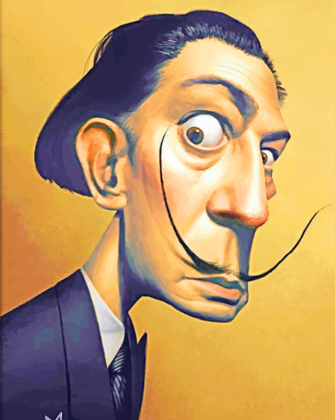
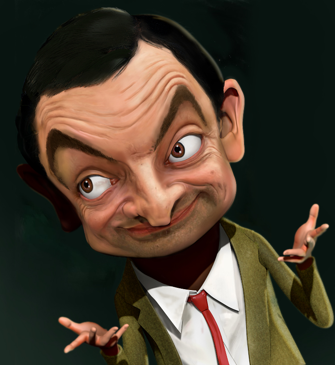
How Do Caricatures Differ from Cartoons?
1. Author's Purpose Vs Theme Cartoons are often created for entertainment, satire, or political commentary. They can be single panels or part of a comic strip or animated series. The themes range from everyday humor to formal, strict social and political issues. Caricatures exaggerate and distort physical features to create a humorous or grotesque effect. They are often used to portray public figures, celebrities, or politicians, exaggerating their most recognizable traits.
2. The Balance Between Style and Technique Cartoons typically have a simplified style, focusing less on realism. The degree of stylization can change, but they often use bold lines and understandable, vibrant colors. They can be either static images or part of an animation. Caricatures are distinguished by a high degree of exaggeration, especially facial features or other traits. Depending on the artist's intent, the style can range from a light, humorous touch to a more grotesque or absurd depiction.
3. The Focus on Audience and Reception Cartoons are planned for a broad audience, including children and adults. They can be found in newspapers, magazines, television, and online platforms. The audience's reception often depends on the content's humor, relatability, and relevance. Caricatures: These are often aimed at a more mature audience familiar with the subject being caricatured. They are popular in editorial sections of newspapers and specialized publications and as a form of personal entertainment at events.
4. Historical and Cultural Context Cartoons have a long past, evolving from simple comic drawings to sophisticated social and political commentary forms. They reflect the cultural, political, and social issues of their time. Caricatures also have a rich history, often connected to political satire and social commentary. Historically, they have been used to ridicule or criticize public figures, policies, and societal models.
5. Narrative and Content Analysis Cartoons often contain a chronology or story, even if conveyed in a single panel. They can contain speech bubbles, captions, and multiple characters interacting with each other. Caricatures typically focus on a single individual and do not necessarily tell a story. The focus is more on visually portraying and exaggerating the subject’s features.
6. The Complexity and the Desired Level of Detail Cartoons often take a streamlined or stylized approach, emphasizing broader themes and messages rather than intricate details. This clarity helps convey messages quickly and effectively to a broad audience. Caricatures: Commonly focus on the details of the subject's face or body, highlighting and exaggerating specific features for humorous or dramatic effect. This attention to detail can make them more complex in their portrayal of individuals.
7. Color Values and Detailed Shading Cartoons: Typically use bold and rich colors with less emphasis on realistic shading. This approach impacts the overall appeal and helps distinguish characters and elements in a cartoon. Caricatures: Might employ a more realistic use of color and shading to enhance the exaggerated features, giving the subject a lifelike yet distorted appearance.
8. Emphasis on Artistic Skills and Techniques Cartoons: While requiring artistic skill, they often concentrate more on creative expression and storytelling. Artists might employ various creative styles, from highly detailed to abstract, depending on their narrative needs. Caricatures require a high level of creative skill to capture and then artistically distort the subject's features. The artist must also understand anatomy and proportion well to exaggerate features effectively.
9. The Power of Frequency and Repetition Cartoons can be part of a series with frequent characters and themes, allowing them to develop over time and for audiences to form a longer-term connection with the content. Caricatures are generally one-off creations focusing on a specific individual at a particular time. They are only sometimes repeated unless the subject remains relevant.
10. Educational Tools - Cultural and Social Influence Cartoons: While they can also comment on society and politics, they often have a broader scope, controlling and reflecting the culture more broadly. Societal norms, directions, and attitudes over time can shape them. Caricatures often directly critique specific individuals, making them a social and political expression mechanism, especially during tumult or controversy.
Comments